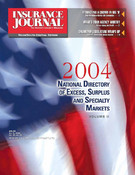Over the years, I have found that many agency owners peg their agency value to traditional benchmarks and current market values. At one time, the industry benchmark for an average agency was one and a half times annual revenues. This seemed to work and most agents accepted it as a rule of thumb.
We all know that this has changed as agency acquisition patterns and preferences changed. What hasn’t changed, however, is that few agents have ever taken the approach that they could intentionally build value. So while sales and expense as the components of profit are frequently discussed, the idea of value is not.
This purpose of this article is to suggest that value and not profit should be the main concern of any agency principle. Further it is a concern that can be planned and built with a focus on the two main value components. These components are revenue and productivity. While revenue is the more obvious of the two, it is the least important. The most important component is productivity. This importance comes from its ability to leverage value and the difficulty that most agents have in improving it.
So, the first question I would ask is how much time an owner spends on issues directly related to productivity? In an insurance agency these can be viewed as both internal (operational) and external (sales) productivity. Internally we may measure productivity by per capita income. Externally we may measure productivity by prospect generation, hit ratio (prospect conversion to client) and average account commission income. Together these key productivity performance indicators tell us how little of our revenue dollar we need to spend to run our business model. They will also greatly influence the impact of how we value the income stream.
A question that I think any business owner needs to ask is ‘how are we going to make money today?’ This translates to the business model for the business. The interesting thing is that most business owners never ask that question. They work on sales, product and services, and maybe human resource issues but rarely are they focused on how they are going to make money. This suggested focus would lead to an understanding of how the fundamentals of the business are integrated.
While we have discussed productivity, we have not direct discussed the revenue side of the value equation. Basically a professional services firm, such as an insurance brokerage, increases revenue by building demand. It builds demand by building relationships and solving problems. These problems may be in the form of various products and services. The more unique or exclusive a product or service the higher the value associated with the revenue stream. This uniqueness or exclusivity will also enhance its ability to create a sustainable demand for the agency’s offerings.
Therefore, an agency that wants to create the value of its business and not accept industry benchmarks or market vagrancies needs to address the following areas:
Belief is a powerful component of change in any of these areas. It requires the daily attention and work of the owner to change the employee’s beliefs and habits.
A business that is dependent on the owner for its day-to-day operation will leave little time for that owner to work on these issues. That is the reason that most of these areas are neglected. Therefore, the owner that wants to build or create value needs to move beyond just day-to-day operational management. That is why a business that can operate on a sustainable basis without the owner’s involvement is worth the most. What should an agency be worth? It should be worth whatever the owner wants it to be worth!
Jim Hull is president of J.R. Hull Co. Inc. For information visit www.hullconsulting.com.
Topics Profit Loss
Was this article valuable?
Here are more articles you may enjoy.


 Dubai Floods Expose Weaknesses to a Rapidly Changing Climate
Dubai Floods Expose Weaknesses to a Rapidly Changing Climate  North Carolina Adjuster and Son Charged With Embezzlement in Roof Jobs
North Carolina Adjuster and Son Charged With Embezzlement in Roof Jobs  Progressive Gains as Drivers Shop Around for Auto Insurance—Again
Progressive Gains as Drivers Shop Around for Auto Insurance—Again  FBI Says Chinese Hackers Preparing to Attack US Infrastructure
FBI Says Chinese Hackers Preparing to Attack US Infrastructure 


